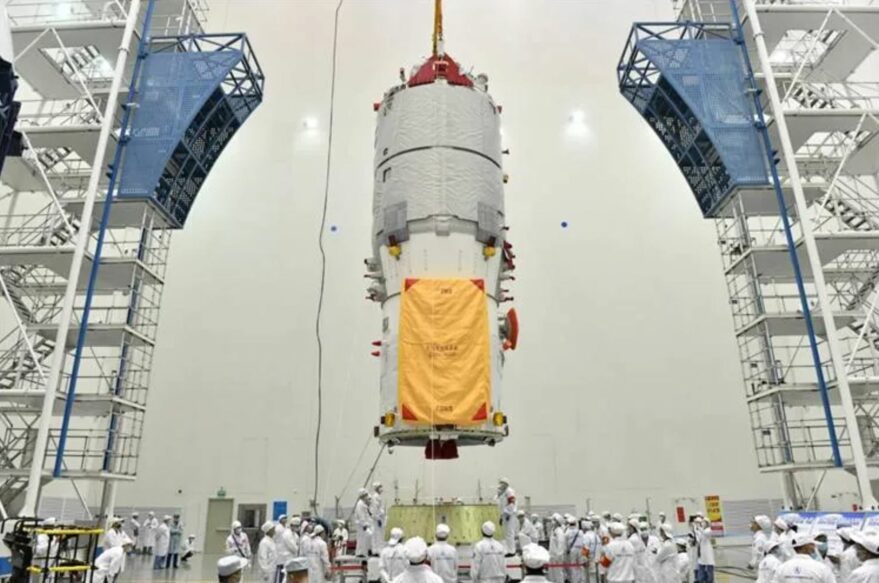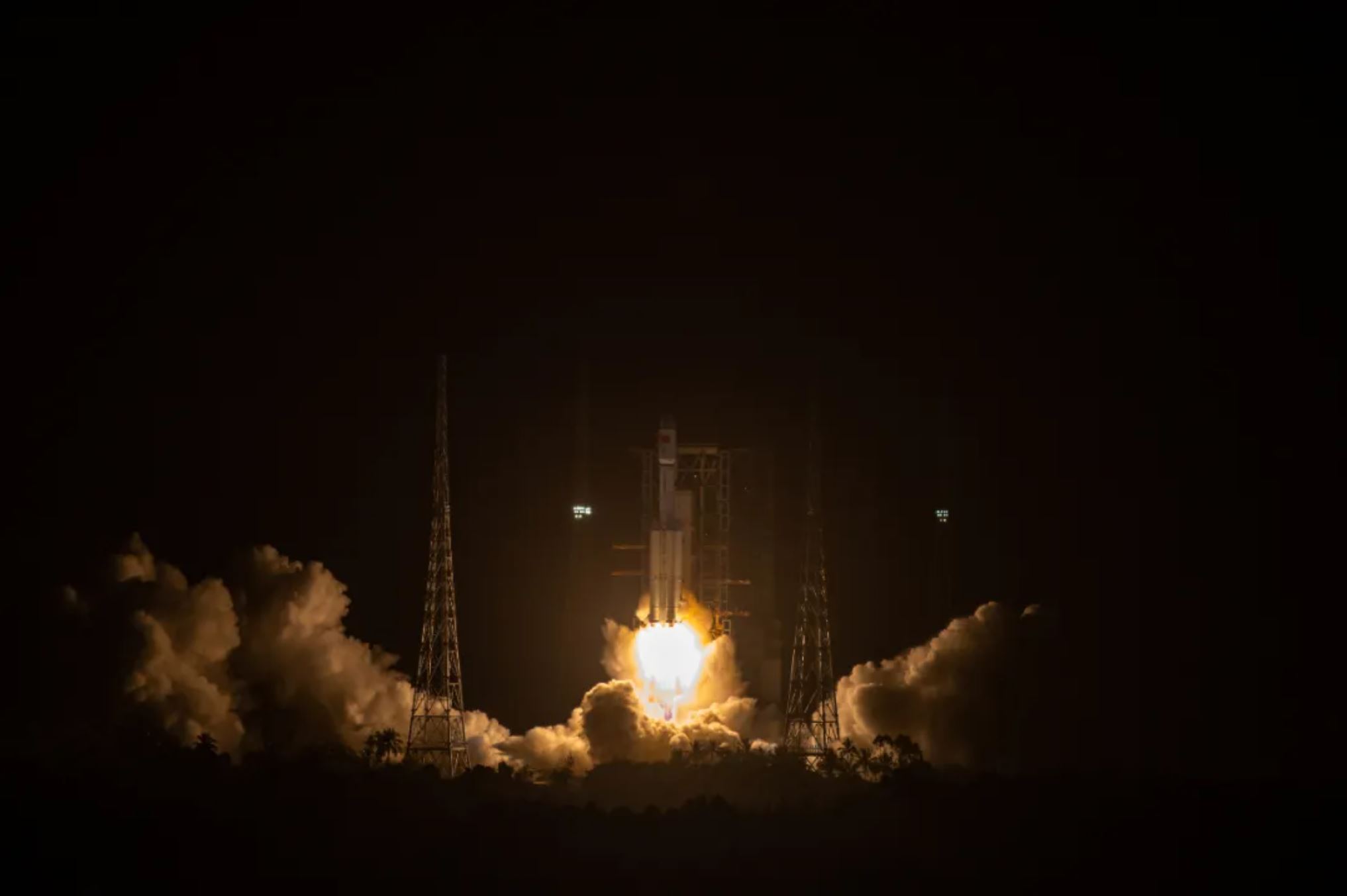Tianzhou-2 docking with Tianhe paves way for June crewed mission.
HELSINKI — China’s Tianzhou-2 cargo spacecraft docked with the Tianhe space station module in low Earth orbit Saturday, eight hours after launch from Wenchang spaceport.
The uncrewed Tianzhou-2 spacecraft completed automated rendezvous and docking maneuvers with Tianhe at 5:01 p.m. Eastern May 29.
Tianzhou-2 is tasked with delivering propellant and supplies ahead of a first crewed mission to Tianhe in June.
Earlier on Saturday a Long March 7 medium-lift rocket lifted off from the coastal Wenchang spaceport at 8:55 a.m. Eastern. The roughly 13-metric-ton Tianzhou-2 cargo spacecraft entered its intended orbit and deployed its solar arrays at 9:17 a.m., the China Aerospace Science and Technology Corp. (CASC) confirmed within an hour of liftoff.
Tianhe, the first module for China’s space station, launched late April 28 and passed on-orbit testing May 18, according to the China Manned Space Engineering Office (CMSEO).
Tianzhou-2 matched its 343 by 371-kilometer orbit for rendezvous. Now docked, Tianzhou-2 will conduct an automatic transfer of 1.95 tons of propellant to the 22.5-ton Tianhe module.
It will remain docked to the station module to support the upcoming crewed Shenzhou-12 mission in June. Tianzhou-2 holds 4.69 tons of cargo in a pressurized segment, including food for the Shenzhou-12 crew for three months. It also carries extravehicular activity space suits and other supplies.
The 16.6-meter-long, 4.2-meter-diameter Tianhe (“harmony of the heavens”) will provide regenerative life support and the main living quarters for astronauts as well as propulsion to maintain orbital altitude.
200 metres. pic.twitter.com/KmGgnawBFO
— Andrew Jones (@AJ_FI) May 29, 2021
Tianzhou-2 was first expected to launch May 19 but the mission was delayed due to “technical reasons,” according to CMSEO. It is unknown how the delayed Tianzhou-2 docking will impact the Shenzhou-12 mission expected around June 10.
Tianzhou-2 is the second launch of 11 missions planned for the construction phase of the three-module Chinese space station across 2021 and 2022.
Experiment modules named Wentian and Mengtian are expected to launch in 2022. The pair will host a plethora of experiments in areas including astronomy, space medicine, space life science, biotechnology, microgravity fluid physics, microgravity combustion and space technologies.
The Chinese space station is expected to operate in orbit for at least ten years. It will be joined in orbit by the Xuntian optical module, a co-orbiting Hubble-class space telescope. The space telescope will have a 2-meter-aperture comparable to Hubble but feature a field of view 300 times greater, allowing 40 percent of the sky to be surveyed across a decade.

